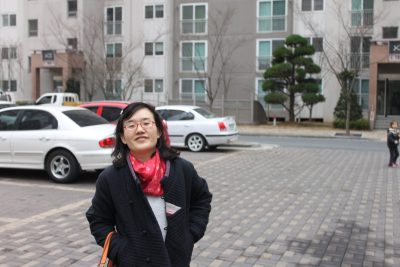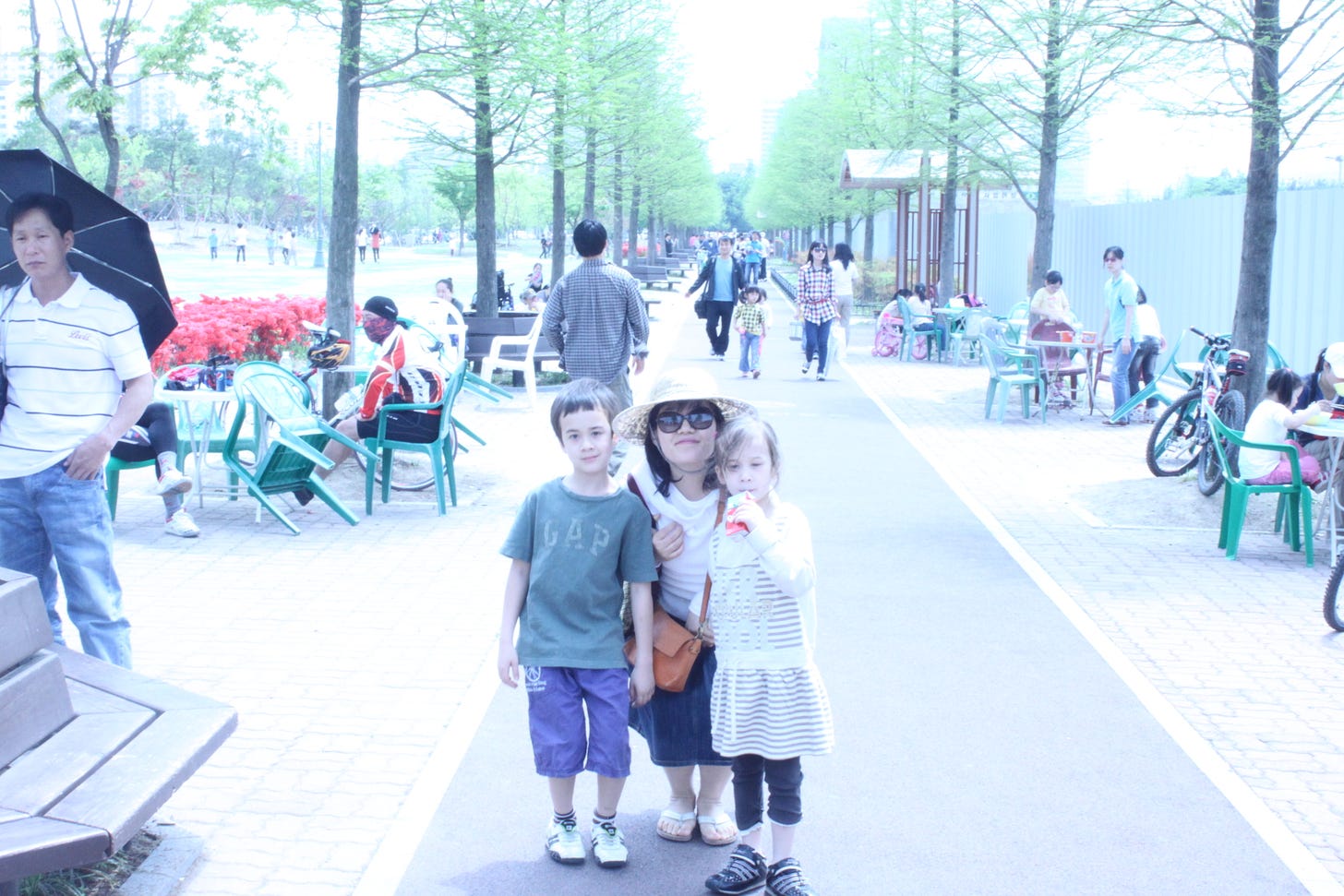A Tribute to My Wife Seung Eun : Emanuel Pastreich
Seung-Eun Yi Pastreich, July 17, 1968-July 27, 2022

All Global Research articles can be read in 51 languages by activating the “Translate Website” drop down menu on the top banner of our home page (Desktop version).
***
Seung Eun passed away on July 28, 2022. Her legacy will live. Our thoughts are with Global Research author Emanuel Pastreich and the family of Seung Eun.
***
Born the fifth of six children to a mother who was fastidious about maintaining an orderly home, and sorry that she had not been able to attend high school, Seung-Eun had both a tremendous drive to learn and a humility about her remarkable insights into the nature of things.
Her father loved reading books, smoking cigarettes, and was generous, but silent, at the many lunches and dinners he arranged.
Seung-Eun was a deeply creative and loving woman, but her creativity was devoted to the spaces she inhabited and the subtle ways she expressed her love for those around her.
Family was the canvas on which she wrote her generous spirit broadly. Even in the midst of the worst setbacks, she found time for family, and managed to create a home. Marvelously and mysteriously, she found deep meaning in the smallest things and led us to understand better ourselves without ever speaking a word.
Seung-Eun 승은 was the name given to her by a Buddhist monk on a trip when she was 28 years old. She bravely decided one day that it would be her name and she never changed her mind. That alone is unusual in Korean society. Her original name was Lee Young-mi 이영미).
Although Seung-Eun grew up in a relatively well-to-do family, her father’s financial troubles meant that she suddenly lost everything at the start of college, and most of her wealthy friends abandoned her.
Some parts of that experience was something that we shared, and I think perhaps it was one of the reasons why she never left me, even under the most dire circumstances.
Seung-Eun made up her mind to study classical Korean music in college. Her parents were deeply worried as they thought the study of Western music would increase her chances of finding a good mate from a wealthy family.
And then she decided to marry me, and did so in spite of all the worries of her family.
She had a deep understanding of Korean music, of Korean traditional painting, and of Korean Buddhism. She was an excellent cook of Korean food and she knew exactly what each of her children enjoyed most. For her, art was life and life was art–but not in a conspicuous, ostentatious, sense.
She had a radiant smile, and a tremendous enthusiasm, that brought light, and energy, to the breakfast table, to the carefully laid out plates and cups in the cabinet, and to the cans and pasta stacked up in the pantry. She energized everything.
I met her in February, 1996, when I was studying in Korea for a year. She spoke no English and did not have any particular interest in the United States. I appreciated this quality immediately as I was tired of Koreans who took an unnatural interest in my sad and tired country.
But there was more. I was struck by the deep sense of respect that she showed for all people. The first time we had lunch together I noticed that she treated the humble woman running the little restaurant with a glowing warmth.
A slightly round face, brilliant eyes, perfect teeth, and a subtle beautiful voice defined Seung-Eun.
She had never visited the United States before she came to meet my parents in 1997. But although she could not speak a word, she had many of the characteristics I remember from my grandmother. She embraced my family as her family. It seemed as if the whole thing had been determined in advance at some ethereal level.
She was soon making all sorts of plans for our future. For my future, and for the children’s future. Some plans worked; some did not.
We ended up at University of Illinois, Urbana-Champaign in1998 and in that rural town, she made a wonderful home, filled with the art and the pottery she had collected over the years. That space, and others that she created later on, still haunt me.

She played elaborate games with the children, Benjamin (born 2001) and Rachel (born 2004). Engaging them in fantastic worlds was her specialty. And the snacks she offered up were created especially for then–and no one else.
She did not have large numbers of friends, but those to whom she was close, she was very close to. She made a special effort to establish friendships with the parents of our children’s friends. She did so, methodically, over decades.
After we moved to Washington D.C. in 2004, in the midst of yet more chaos, she created a regular family schedule and made the children feel that they were the center of the world–which they were, of course. It was a simple apartment in Falls Church, but everything was carefully arranged. The kids always knew she would be there for them and that she cared about them more than anything.
She was a great teacher. She had tremendous patience with the two of them and she tried always to figure out exactly what they needed. Teaching was not simply about things and numbers. I sensed that there was always a deep ethical component to teaching the children for her. And I also learned so much myself, without even noticing it. I would later realize just what a genius she had, how much smarter than just about anyone else she was. But I never, never perceived her genius at the moment. I only understood it much later.
She was not a teacher in the sense of a Ph.D at a university. She was a teacher who was effective precisely because her teaching was invisible.

When we moved to Korea in 2007, to the smaller city of Daejeon, suddenly lifted out of Washington D.C. and placed in a location that did not have many amenities, it was a bit of a shock for all of us. Moreover, the university, and the governor’s office, were not always friendly environments. But Seung-Eun was able to create a stable family environment anyway, one full of hidden sacred spaces, even when we had to move every year, or every nine months.
She became deeply involved in Buddhism while we lived in Daejeon. At her command, we all loaded up in the car and drove out to various temples deep in the mountains, especially to Bongamsa 봉암사 Temple near Mungyeong. Bongamsa Temple is a deeply spiritual place near a quick flowing river that threatens to carry you away in its current. We spent our days there wandering the paths around the temple, wading in the pools on top of the great boulders further up in the mountains, and speaking with the monks on the wood verandas of the temple. I still remember her dragging us to the services at dawn when the drums rumbled in the stillness. .
After we moved to Seoul in 2011, Seung-Eun started to study Buddhist art history at Korea University and for a few years was buried in books. She even took off on a trip along the Silk Road all by herself from which she brought back hundreds of photographs of odd and intriguing temples and carvings.

She was almost finished writing her master’s thesis on temple portraits in Korea and Japan when she was diagnosed with lung cancer in 2014. The surgery and chemotherapy, stopped the cancer, for a while, but they sapped her energy and slowed her down immensely. She continued to love her children, to be concerned for those around her, but she could not work as long, read as much, or make the elaborate plans that she once did.
We tried moving back to Washington DC in 2019. She again made an amazing space to live in within the brick house we rented. But her health was worse and I could no longer find the employment necessary to support us.
That meant that we went back in Korea.
The last year, after 2021, Seung-eun’s mother grew weaker and weaker and Seung Eun spent much time taking care of her. Eventually she lived with her mother full time. I think that taking care of her mother helped Seung-Eun to regain some energy. It was love, after all, that gave her power.
She made plans to go back to the United States so she could be with the children, and she worked at a restaurant in order to make some money that she could send to them.
She did not tell anyone that the cancer had reoccurred. We had no idea just how serious the situation was. I think that not telling us was her way of protecting us.
There can be no doubt about the concern, and the love, that Seung-Eun had, day and night, for the children, and for me.
I feel that the family unit, the four of us became so incredibly close because of the loving attention that she gave to us without hesitation. We did not know that she was the cement that held us together, a kind of invisible cement.

Our wedding, November 8, 1997 @ Lark Creek Inn, Larkspur, California

